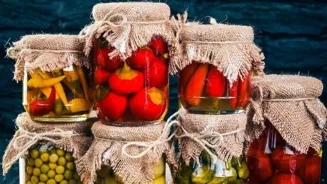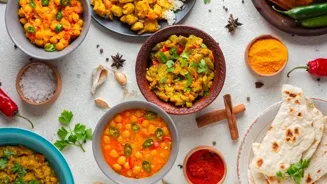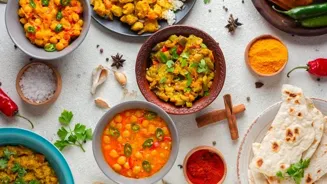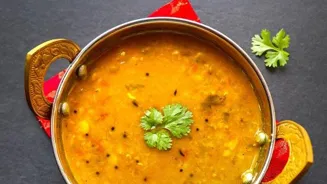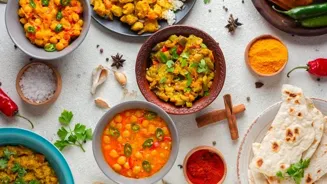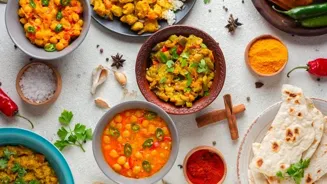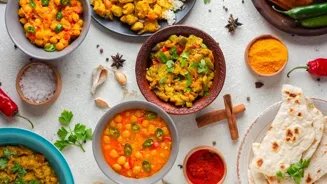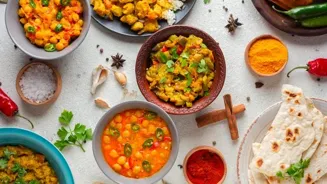Discover the magic of Indian pickles - a burst of flavor, tradition, and fermentation alchemy. Dive into the art of creating your own unique achar! Read on to unlock the secrets and savor the essence of homemade
goodness
For generations, Indian households have treasured the vibrant tradition of pickle-making. More than just a condiment, achar, as it's fondly called, is a burst of flavour, a culinary time capsule, and a testament to the magic of fermentation.
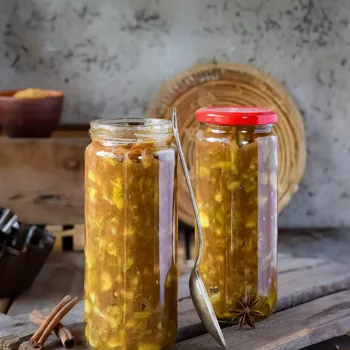
Forget store-bought imitations; the real joy lies in crafting your own pickles, tailored to your taste and brimming with homemade goodness. It's surprisingly easy, deeply rewarding, and a wonderful way to connect with your culinary heritage.
Plus, homemade pickles often have that extra bit of ‘maa ke haath ka pyaar’!
Indian pickles transform ingredients with fermentation for flavorful preservation
The beauty of Indian pickles lies in their versatility. From the tangy rawness of mango to the spicy kick of chili, the options are endless. The fermentation process leverages the power of natural microorganisms to transform humble ingredients into flavour bombs.
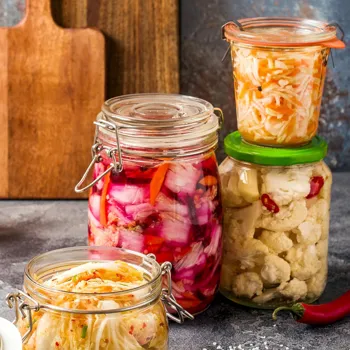
Salt, spices, and oil act as preservatives, creating an environment where beneficial bacteria thrive, converting sugars and starches into lactic acid. This not only preserves the ingredients but also adds that distinctive sour and complex flavour that defines a good pickle.
It’s not just about preservation; It’s about flavour alchemy.
Prepare supplies for making pickles: vegetables, salt, spices, oil
Before diving in, gather your supplies. The core ingredients are your chosen vegetables or fruits, salt, spices, and oil. For mango pickle, opt for raw, firm mangoes. For lemon pickle, choose juicy, thin-skinned lemons. Green chilies, ginger, garlic, and mixed vegetables are also popular choices.
Salt plays a crucial role in drawing out moisture and inhibiting the growth of harmful bacteria. Use good quality, non-iodized salt. Spices are the soul of the pickle, adding layers of flavour and aroma.
Mustard seeds, fenugreek seeds (methi), turmeric powder, red chili powder, asafoetida (hing), and coriander seeds are commonly used. The choice and proportions depend on the specific pickle recipe. Oil acts as a barrier, preventing spoilage and enhancing the flavour.
Traditionally, mustard oil is preferred for its pungent taste and preservative properties, but you can also use groundnut oil or sunflower oil. In terms of equipment, you'll need a clean, dry glass or ceramic jar for fermenting the pickle. Ensure it has a wide mouth for easy access.
A clean, dry spoon or spatula is essential for mixing and handling the ingredients. You might also need a mortar and pestle for crushing spices, and a clean cloth for covering the jar.
Hygiene and proper preparation key to successful pickling
The success of your pickle hinges on maintaining impeccable hygiene. Thoroughly wash and dry all your vegetables or fruits. Any trace of moisture can lead to spoilage. Cut the ingredients into desired sizes. For mango pickle, you can cut the mangoes into cubes or wedges.
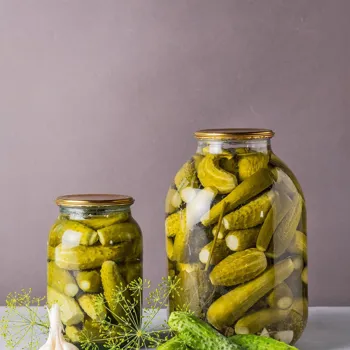
For lemon pickle, slice them into segments. Blanching or sun-drying the vegetables or fruits is often recommended to reduce moisture content and prevent spoilage.
Blanching involves briefly immersing the ingredients in boiling water for a minute or two, followed by an ice bath to stop the cooking process. Sun-drying involves spreading the ingredients on a clean cloth and exposing them to direct sunlight for a few hours.
Roasting spices is crucial for releasing their aroma and enhancing their flavour. Dry roast the spices in a pan over low heat until fragrant, taking care not to burn them. Grind the roasted spices into a coarse powder using a mortar and pestle or a spice grinder.
This powder will form the base of your pickle masala. Finally, sterilize your jar by boiling it in water for a few minutes or baking it in the oven. This ensures that no harmful bacteria are present to contaminate your pickle.
Maintaining a clean environment is the cornerstone of successful pickling.
Assemble and preserve your pickle with flavorful spices and oil
Now comes the fun part: assembling your pickle. In a large bowl, combine the cut vegetables or fruits with the salt and turmeric powder. Mix well and let it sit for a few hours or overnight. This allows the salt to draw out moisture from the ingredients, creating a natural brine.
After the resting period, drain the excess water from the vegetables or fruits. Add the roasted and ground spices to the bowl and mix well. Ensure that the spices are evenly distributed. Heat the oil in a pan until it is hot but not smoking.
Allow it to cool slightly before pouring it over the vegetables or fruits and spices. The hot oil helps to release the flavours of the spices and acts as a preservative. Mix everything well, ensuring that all the ingredients are coated with oil.
Transfer the mixture to the sterilized jar, pressing it down gently to remove any air pockets. Leave some space at the top of the jar. Pour any remaining oil over the mixture to create a protective layer. Cover the jar with a clean cloth or a lid.
If using a cloth, secure it tightly with a rubber band.
Ferment pickles in cool, dark place; stir daily, taste, store properly
The fermentation process requires patience and attention. Store the jar in a cool, dark place. Avoid direct sunlight, as it can inhibit the growth of beneficial bacteria.
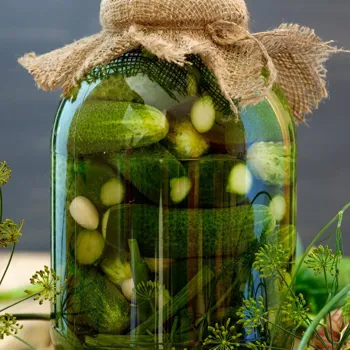
For the first few days, stir the pickle mixture with a clean, dry spoon every day to ensure that the ingredients are submerged in the brine. This prevents the growth of mold and other harmful microorganisms. As the pickle ferments, you will notice small bubbles forming on the surface.
This is a sign that the beneficial bacteria are at work. The fermentation process can take anywhere from a few days to a few weeks, depending on the ambient temperature and the type of pickle. Taste the pickle regularly to check its progress. It is ready when it has developed a tangy, sour flavour.
Once the pickle is ready, you can store it in the refrigerator or in a cool, dark place. Properly fermented and stored pickles can last for several months or even years. Remember, the key to a long-lasting pickle is to keep it submerged in oil and prevent any contamination.
Mango Pickle
Take raw mangoes, cut into small pieces, mix with salt and chili powder. Keep aside for 2 days. In pan roast mustard seeds, fenugreek seeds, turmeric powder and asafoetida and grind well. Heat mustard oil and allow it to cool. Mix mango pieces and spice powder. Keep in a jar and pour oil over it.
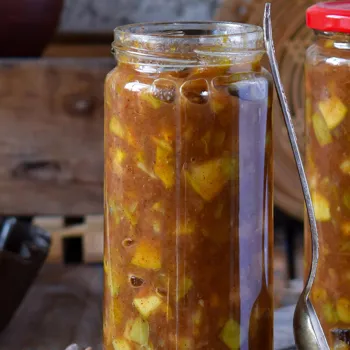
Allow fermentation for 1 week.
Lemon Pickle
Chop lemons, add salt, keep for a week till they shrink. Then add jeera and mustard seeds, asafoetida powder. Saute in little oil. When cool, fill it in a jar, cover with muslin cloth. Keep in sunlight for about 2 weeks.
Experiment with spices to create unique pickles, embrace the process
These are just starting points. Feel free to experiment with different spices and ingredients to create your own signature pickles. The journey of pickle-making is a journey of discovery, where you can explore the flavours of India and create something truly unique.
So, gather your ingredients, embrace the process, and embark on your own pickling adventure! Happy pickling!
AI Generated Content. Glance/InMobi shall have no liability for the content